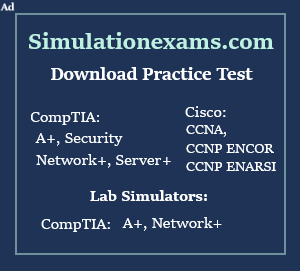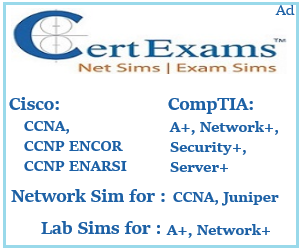Proper patching procedures are critical in a clustered environment to maintain consistency and avoid issues with failover and failback. Heartbeat is a monitoring mechanism used in clustering to detect failures and initiate failover processes when necessary.
Fault tolerance
Fault tolerance refers to the ability of a system to continue operating even in the presence of a hardware or software failure. It involves building redundancy into the system to ensure that if any component fails, the system can continue to function without interruption.
Server-level redundancy involves the use of multiple servers that can provide services to clients even if one of the servers fails. In this approach, each server in the cluster is configured to provide the same set of services, and the servers are load balanced to ensure that each server handles an equal share of the workload. If one of the servers fails, the load balancer redirects traffic to the remaining servers in the cluster.
Component redundancy, on the other hand, involves duplicating critical components within a server, such as power supplies, network cards, or hard drives. This redundancy ensures that if one of the components fails, the system can continue to operate without interruption using the backup component.
Both server-level and component redundancy are important for building a fault-tolerant system. By combining these approaches, administrators can ensure that their servers are highly available and can continue to provide services even in the presence of failures.
Redundant server network infrastructure
Redundant server network infrastructure is a setup where multiple servers are used to ensure high availability of network resources and services in the event of a server failure or network traffic overload. Load balancing is an essential component of a redundant server network infrastructure, and it ensures that the network traffic is distributed evenly across the servers, thereby reducing the risk of network downtime and improving network performance.
There are two types of load balancing: software and hardware. In software load balancing, load balancing software is installed on the servers, which distributes the network traffic between them. In contrast, hardware load balancing involves using specialized hardware devices called load balancers, which are placed between the servers and the network to distribute the network traffic.
There are different load balancing algorithms, such as
round-robin and most recently used (MRU), that can be used to distribute the network traffic across the servers. Round-robin is a simple algorithm that distributes the network traffic in a cyclic manner across the servers, while MRU algorithm sends the network traffic to the server that has been used the least recently.
Overall, redundant server network infrastructure is an effective way to ensure high availability and reliability of network resources and services.
a) Network interface card (NIC) teaming and redundancy NIC teaming and redundancy can improve network reliability and performance by combining multiple NICs into a single logical interface. There are two main types of NIC teaming:
b) Failover: In this mode, one NIC is active and the other NICs are in standby mode. If the active NIC fails, one of the standby NICs takes over.
c) Link aggregation: In this mode, multiple NICs are combined to create a single logical interface with increased bandwidth and redundancy. Traffic is distributed across the NICs based on a hashing algorithm. If one or more NICs fail, the remaining NICs continue to handle traffic.
To configure NIC teaming and redundancy, follow these general steps:
1. Install additional NICs, if necessary.
2. Configure the NICs with static IP addresses or DHCP, as needed.
3. Install any necessary drivers or software for the NICs.
4. Configure the NIC teaming or link aggregation using the operating system's built-in tools or third-party software.
In Windows Server, NIC teaming can be configured using the Server Manager GUI or PowerShell commands. In Linux, NIC teaming can be configured using the ifenslave utility or other third-party software.
It's important to ensure that the network infrastructure, including switches and routers, supports NIC teaming and link aggregation. Additionally, proper monitoring and testing should be performed to ensure that the NIC teaming and redundancy is working as expected.
Virtualization
Virtualization is the process of creating a virtual version of something, such as an operating system, server, storage device, or network resources. In the context of computer systems, virtualization involves creating a virtual representation of computer hardware, which can be used to run one or more virtual machines (VMs) on a single physical server or computer.
Virtualization allows multiple operating systems to run on a single physical machine, which can improve hardware utilization and reduce the need for additional physical servers. It also provides flexibility and the ability to easily move or scale virtual machines between physical servers, which can simplify management and improve availability. Virtualization is widely used in data centers, cloud computing, and other enterprise IT environments.
Host vs. guest
In virtualization, a "host" refers to the physical machine or server that is running the virtualization software, which allows multiple
"guest" operating systems to run on top of it. The guest operating systems are virtual machines that run on top of the host and share the physical resources of the host machine. The guest operating systems are isolated from each other and from the host, and can be configured with different operating systems, applications, and settings. The host provides the resources, such as CPU, memory, and storage, to the guest operating systems and manages their access to these resources.
Virtual networking
Virtual networking in virtualization refers to the configuration of network connectivity between virtual machines (VMs) and between VMs and the physical network. It allows VMs to communicate with each other and with the outside world.
Here are some common virtual networking concepts:
1. Direct access (bridged): In this mode, the virtual network interface of a VM is directly connected to a physical network interface on the host machine. The VM can communicate with other machines on the network as if it were a physical machine on the same network.
2. Network address translation (NAT): In this mode, the host machine acts as a router between the VMs and the physical network. Each VM is given a private IP address and the host machine translates the IP addresses to the public IP address of the host machine. This allows the VMs to access the internet and other machines on the physical network, but they cannot be directly accessed from the outside world.
3. vNICs: Virtual network interface cards (vNICs) are the virtual network adapters that connect a VM to the virtual network.
4. Virtual switches: Virtual switches are the software components that connect vNICs of VMs to each other and to the physical network. They function like physical switches, but they are implemented in software.
Resource allocation and provisioning
Resource allocation and provisioning are important aspects of virtualization that help ensure optimal performance of virtual machines (VMs). Here are some key considerations for each resource:
CPU: VMs are allocated a certain number of virtual CPUs (vCPUs) based on the physical CPUs available on the host system. The number of vCPUs can be adjusted as needed to meet the demands of the VM.
Memory: VMs are allocated a certain amount of memory (RAM) based on the total memory available on the host system. Memory allocation can be adjusted as needed to meet the demands of the VM.
Disk: Virtual disks are used to store the operating system, applications, and data of a VM. Disk space can be dynamically allocated or fixed in size, depending on the needs of the VM.
NIC: VMs are assigned virtual network interface cards (vNICs) to connect to the virtual network. The bandwidth and number of vNICs can be adjusted as needed to meet the demands of the VM.
Overprovisioning: Virtualization allows for overprovisioning of resources, meaning that more resources can be allocated to VMs than are physically available on the host system. This can lead to improved performance, but should be done carefully to avoid resource contention.
Scalability: Virtualization allows for easy scaling of resources by adding or removing vCPUs, RAM, disk space, and vNICs to meet changing demands. This can be done without disrupting the operation of the VM or requiring downtime.




